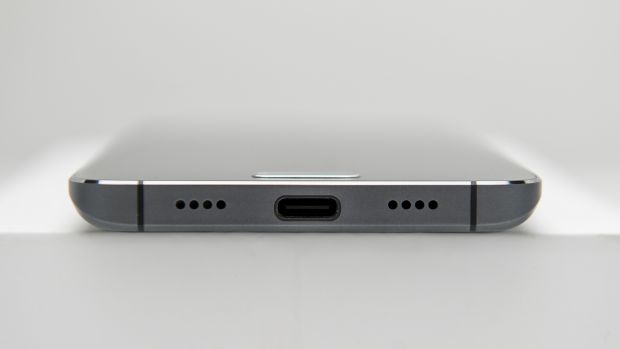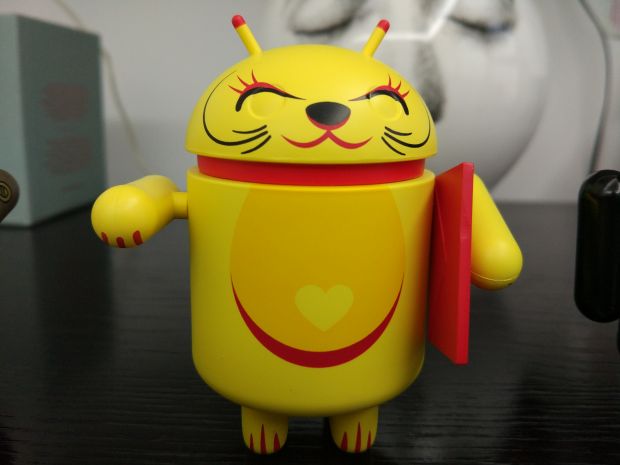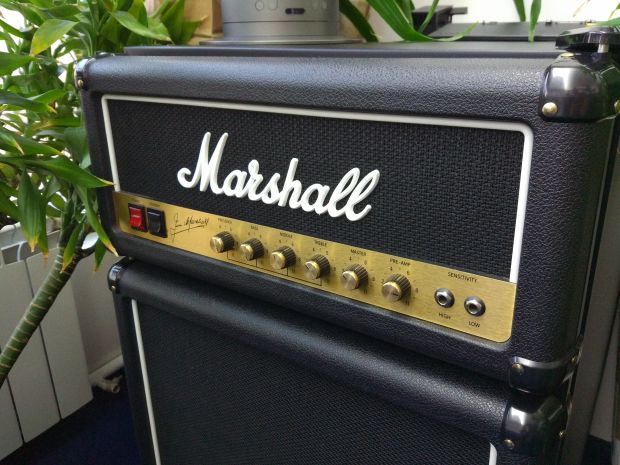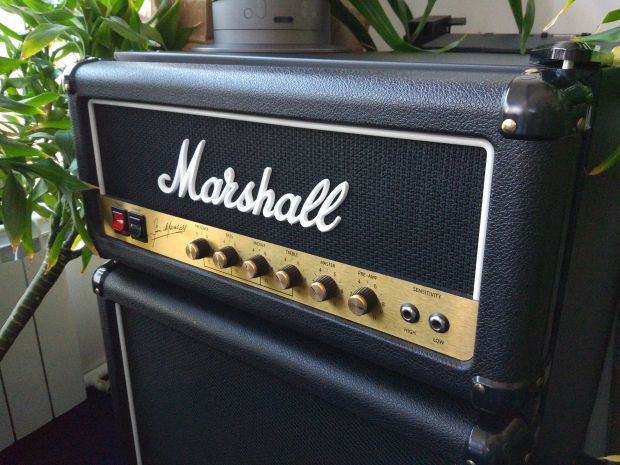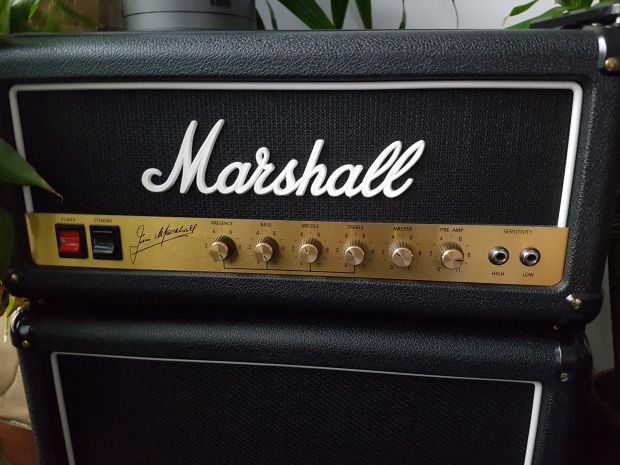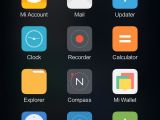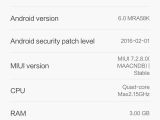| INTRO | DESIGN |
|---|---|
| DISPLAY | HARDWARE |
| CAMERA | BATTERY |
| SOFTWARE | CONCLUSIONS |
Xiaomi is often referred to as a copycat, as the Chinese manufacturer has launched products that more or less remind of devices designed by other companies, but available at shockingly low prices. Critics said that Xiaomi stands no chance to compete against the top phone makers such as Samsung and Apple, despite optimistic statements coming from company executives who predicted unstoppable accession.
The criticism is long gone and Xiaomi is now more than ever a rival for Samsung, Apple, and all the other phone manufacturers out there, with the Chinese clearly aiming higher based on the very same recipe: devices that are as advanced as possible, but as cheap as possible.
Undoubtedly, this approach works. We live in an ever-changing world where brands no longer play a decisive role when purchasing a new phone. Customers are smarter and before anything, they can judge a handset by its spec sheet and not by the brand. This is one of the reasons Xiaomi is growing so fast. Unveiled this year in Barcelona, Xiaomi Mi5 does nothing more than to take this whole approach one step further. Based on the same "cheaper, but not less powerful" recipe, the Mi5 seems to be the perfect alternative to high-end Android devices and is often described as a poor man's Galaxy S7, not necessarily because of its looks, but also due to the fact that it comes with specs that are almost at the same level. To determine whether the Mi5 is indeed a worthy alternative to the super-expensive S7, we've taken the Chinese version of the device for a spin, so read on to discover our findings and find the answer to this question.
DESIGN
If there's something that Xiaomi really needs to be praised about, it's the design of their devices. The first time I saw a Xiaomi device a few hours ago, I was actually impressed with the Apple-like packaging and then by the attention that the company paid to every little detail of the phone in terms of design. And Xiaomi truly remains committed to these values, and the Mi5 doesn't disappoint. The phone comes with a 5.15-inch display that's protected by Corning Gorilla Glass 4 and should withstand the majority of everyday shocks and hits without any risk of breaking into pieces. There're almost no bezels on the two side edges of the display, and this makes it look really modern and stylish. When comparing the front design of the phones, the iPhone 6s, for example, seems to be years behind the Mi5, and it's very clear that Xiaomi was trying very hard to get everything done right in this area. The metallic frame provides a luxurious touch to the Mi5, and it houses the volume and power/lock controls, as well as the SIM tray, which can accommodate two different cards.
The back of the phone is where the Mi5 shines. Literally. Made of ceramic, the shiny back and the curved edges (which are extremely similar to those on the Galaxy S7), make the phone look really luxurious, although you wouldn't expect this given the fact that the list price is around $300 for the entry-level model. Also capable of withstanding the most brutal shocks, the back cover is home to millions of fingerprints and there's no way to prevent this from happening. You could use a cover, but then you lose the cool factor that the ceramic back actually brings, so you have to live with it or become a weirdo and clean it every few minutes. One less known thing about the Mi5 is that the back of the phone is actually removable. Xiaomi advertises the phone as with a non-removable battery and cover, but with little effort, you can pull it out. We don't recommend anyone doing this, but in case you drop it on the ground, and the back cover jumps out of place, it's easy to push it back in. All in all, the Mi5 is just yummy. It's brilliant to hold in hand and in my opinion, 5.1-5.2 inches is just the perfect dimension to be used one handed. Anything beyond that requires two hands and falls in a different category.DISPLAY
It's hard not to love the Mi5 when looking at this brilliant display. The device comes with a 5.15-inch IPS LCD display with a resolution of 1080x1920 pixels and protected by the aforementioned Gorilla Glass 4. Although it uses the same display technology as the iPhone 6s, the Mi5 has a better resolution (Apple still uses 750x1334 pixels), and it's easy to spot the differences with the naked eye. Colors are crisp, everything is sharp, and color separation is at the top end. As mentioned, the Chinese manufacturer has beautifully crafted the display into the body of the phone, so there are almost no side bezels, so the front side of the device is easily dominated by the screen. The Mi5 has a screen-to-body ratio of 73.1 percent while the iPhone 6s is at 65.6 percent. The Mi5 has excellent sunlight readability, and although we've noticed that at random times we had to manually increase brightness under direct sunlight, we can safely put it at the same level with the Galaxy S7's latest-generation super AMOLED screen. The auto display mode, however, needs some adjustments, as it sometimes keeps the screen too bright in low light conditions or reduces brightness when it's not needed. It goes without saying, however, that the display is one of the key parts of the Mi5 and it certainly exceeds expectations. Again, if you consider the price of the phone and the quality of the display, you can only be pleased with what you're being offered.
| Screen type | IPS LCD capacitive touchscreen |
|---|---|
| Resolution | 5.15 inches (73.1% screen-to-body ratio) |
| Size | 1080 x 1920 pixels |
| Protection | Corning Gorilla Glass 4 |
HARDWARE AND PERFORMANCE
Snapdragon 820. This pretty much sums it all. Xiaomi Mi5 comes with the ultra-new Snapdragon 820 processor that's also available in some variants of the Galaxy S7 and which is said to bring the best mix of battery life and processing power. The Qualcomm MSM8996 Snapdragon 820 is years ahead of older processors, and you can easily tell that when using the phone. It's one of the fastest and most responsive devices on the market.
Anyway, we can't help noticing that some visual animations introduced in MIUI 7 sometimes make it feel slower.
With some tweaks and optimized animations, the Mi5 can get closer in terms of speed to more expensive devices, such as the Nexus 6P.
“It's faaaaaast.” The 820 only feels hot when performing very demanding tasks, such as updating the phone, watching a video, and downloading a large file in the background. Otherwise, it's cold most of the time, or a little warm to say the least when performing average tasks. The CPU is paired with 3 GB of RAM, which is more than enough for the current setup (4 GB are however offered on the Pro version, but once again, you won't feel like it needs more). The Adreno 530 GPU also meets expectations and is the exact same chip used on the Galaxy S7. As far as storage goes, the Mi5 is being offered with 32 or 64 GB, depending on the version you choose, but the Pro version will ship with 128 GB.
There's no microSD card slot, and this is actually a drawback, especially in the case of the 32 GB version where you're very likely to run out of storage if you shoot in 4K a lot.
#CPU, memory, and storage options
| CPU (version dependent) | Dual-core 1.8 GHz Kryo & dual-core 1.6 GHz Kryo Dual-core 2.15 GHz Kryo & dual-core 1.6 GHz Kryo |
|---|---|
| GPU | Adreno 530 |
| RAM (version dependent) | 3 GB / 4 GB |
| Storage | 32 GB / 64 GB |
| Card slot | No |
#Connectivity options
| Wireless | Wi-Fi 802.11 a/b/g/n/ac, dual-band, Wi-Fi Direct, DLNA, hotspot |
|---|---|
| Bluetooth | 4.2, A2DP, LE |
| NFC | Yes |
| Infrared | Yes |
| USB | Type-C for charging and data transfers |
CAMERA
Let's start with the conclusion. If there's something that needs to be significantly improved on the Xiaomi Mi5, it's the camera.
#Camera specs
| Main camera | Specs: 16 MP, f/2.0, 1/2.8" sensor size, 1.12 µm pixel size Features: phase detection autofocus, OIS (4-axis), dual-LED (dual tone) flash Photo: geo-tagging, touch focus, face/smile detection, panorama, HDR Video: 2160p@30fps, 1080p@30fps, 720p@120fps |
|---|---|
| Front-facing camera | Specs: 4 MP, f/2.0, 1/3" sensor size, 2µm pixel size Features: Filters Photo: Magic mirror options |
The camera uses a 1/2.8-inch sensor size, slightly inferior to the 1/2.6-inch unit used the Galaxy S7, and comes with the standard feature lineup including touch focus, face detection, HDR, panorama, and geo-tagging. For photo shooting, the Xiaomi Mi5 features several models, including manual, tilt-shift, fish-eye, beautify, and straighten, and multiple filters such as mono, vivid, blur, Japanese, mirror, and indigo.
As far as video is concerned, there are only three modes available: time-lapse, slow-motion, and audio focus.
“Not your everyday camera.” Photo quality is generally good, although we've found out that it all depends on the amount of light in your perimeter. The Mi5 focuses decently fast, and face detection is most of the time very quick, with daytime photos looking above the average.
We've noticed, however, that HDR mode kicks in very often, and the LED flash is being used even when it's not needed (such as when taking a photo of an object that's not in front of you). In low-light conditions, photo quality is acceptable, but noise is still over the place. It maintains color levels quite well, though, and the dual-tone flash doesn't tend to burn photos.
In some cases, however, over-processing doesn't work right, and the amount of white in the photo is adjusted up to a level that makes it look very artificial.
#Camera samples (optimal light vs. low light)
And speaking of post-processing, the Mi5 does it very fast, and this is mostly thanks to its super-fast Snapdragon 820 processor.
Photos usually have good colors, but we've learned that in 99 percent of the cases, the saturation level is too high, and objects tend to be more colorful in pictures shot with the Mi5 than they are in reality. As far as video is concerned, the Mi5 can also shoot in 4K, but the quality of the video doesn't seem to match the one of the iPhone 6s Plus, for instance. OIS is a big plus, though, especially for such recordings. Overall, the camera available on the Mi5 is just average, and this is where Xiaomi needs to focus on the next upgrades. It's not disappointing, that's for sure, but the camera seems to be the place where the Chinese tried to reduce costs the most.
BATTERY
When it comes to battery life, there's just one thing to say: one day is easy, two days are very likely. The Mi5 comes with a 3,000 non-removable battery which according to Xiaomi's data, should easily provide you with 2 full days of autonomy.
Doze certainly helps a lot because it slows down the engine when you're not using the phone and thus reduces the amount of power to keep the device alive. After testing it on several cycles, here's what we've found. First of all, it shouldn't be hard to get through the day with the Mi5 because, in most cases, we barely reached 50 percent before getting ready for bed.
“Monster battery life.”
On the latest cycle, we've charged the phone to 100 percent on Day 1 at 13:00 and it only needed to be recharged on Day 3 at 12:00, with moderate usage. If you're a heavy user, it should provide between 26 and 30 hours of battery life. Light users will be spoiled with more than two days of battery life. Thanks to its USB Type-C charging port, the Mi5 gets more juice in no time. The device comes with a fast charging system that's supposed to push it to 80 percent in just 30 minutes thanks to the built-in Qualcomm Quick Charge 3.0, whereas the Galaxy S7 can achieve only 60 percent in the same amount of time.
The Mi5 does not have wireless charging though, but since there aren't so many fans of this charging tech for now, it's not such a big deal. A full charge takes 75 minutes for the Mi5 using the built-in wall charger and running at full throttle, with the phone really getting hot during the whole time. Again, not a drawback since that's how fast charging works, but as a general precaution, try not to keep the phone on a blanket during charging.
#Battery life figures
| Light usage | 52 hours |
|---|---|
| Moderate usage | 36 hours |
| Heavy usage | 26 hours |
| Charging time | 75 minutes |
SOFTWARE
Xiaomi ships the Mi5 with its eye-candy and super-easy-to-use MIUI, now at version 7 and based on Android Marshmallow. If you've never used MIUI before, this might be a different world from you, but Android users should have no problem to become familiar with it in just a few minutes. MIUI has been designed from the very beginning to be easy to use and eye-candy, and it certainly meets this purpose. There are plenty of customization settings, such as visual effects, widgets, wallpapers, and themes, but once again, these could make the phone feel slow in certain conditions. The Settings screen might need a few minutes to get used to, as Xiaomi reorganized all options and they are grouped in different sections as compared to stock Android, but it's all just a matter of time. Xiaomi customized its own operating system with features that traditionally only rooted users have in Android, such as the possibility to change the name of the carrier in the status bar.
Plus, there are several other tools in the OS, such as those that allow you to record a voice call, as well as more quick toggles in the notification center, including a guest option and a screenshot button.
“Xiaomi MIUI is a love it or hate it OS.” There still are things to improve in MIUI and one is the way notifications are displayed in the action center. You can't reply or call someone straight from the notification, and the only options available are opening the apps or clearing the message. The Chinese version comes without Google apps (including the Google Store), so you have to turn to some old tricks to get these working on the Mi5. We've done this, but the result isn't always the best, and while some apps fail to work properly, others crash or feel significantly slower than the pre-installed apps (Google Chrome, for instance, takes 2 to 3 seconds to load every page while the default browser loads every single website instantly). We've also had some problems with notifications arriving on our phones and experienced some delay, so software and firmware updates are needed. We're being told that the international version works like a charm with all of these, so it must be related to the uncanny match of a Chinese phone and European networks. The Xiaomi Mi5 is encrypted by default, a feature that is part of the Marshmallow update, and this is clearly an important win given the ongoing struggle to protect user data as much as possible these days.
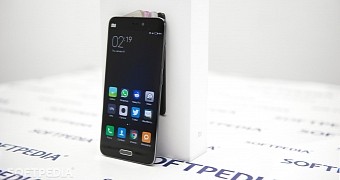
 14 DAY TRIAL //
14 DAY TRIAL // 